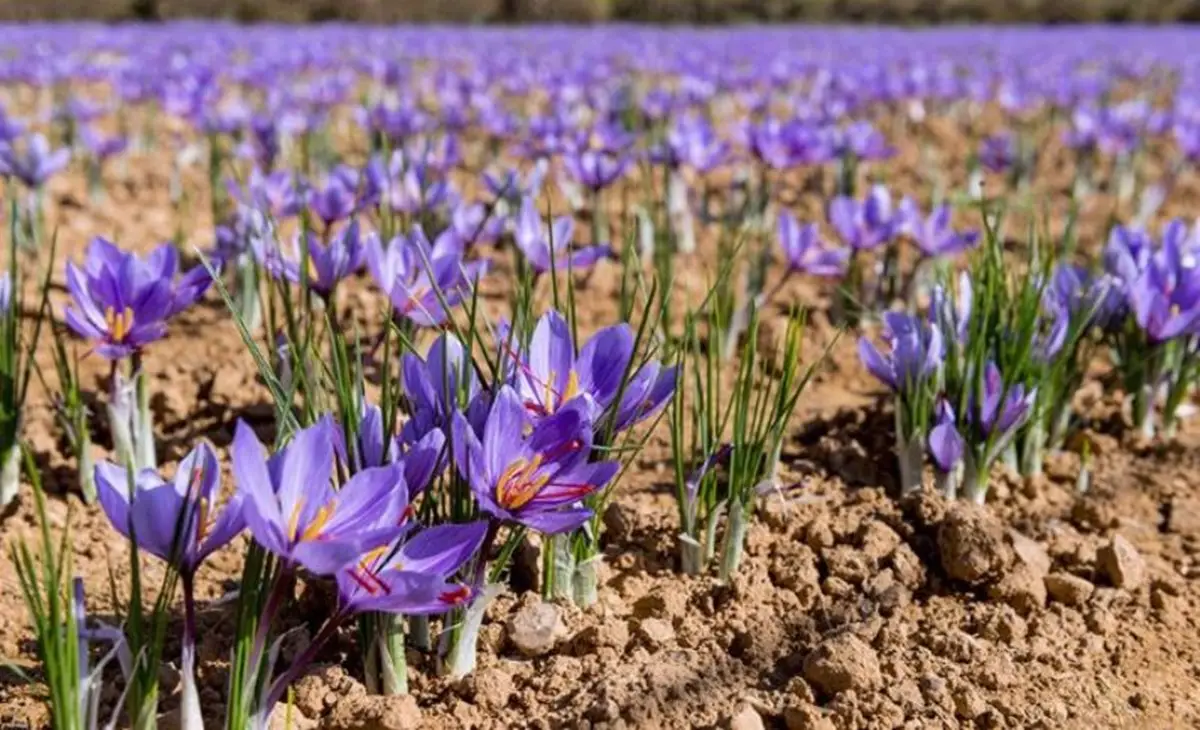According to growers and officials, the National Saffron Mission, which was launched in 2010, played a pivotal role in the substantial increase in saffron production and officials are hopeful that the coming years will bring more good news for saffron growers.
Kashmir’s golden crop saffron is scripting a new history as the per hectare production of the spice has increased manifold bringing cheers among the growers who had been constantly seeing a decline of the crop.
According to growers and officials, the National Saffron Mission, which was launched in 2010, played a pivotal role in the substantial increase in saffron production and officials are hopeful that the coming years will bring more good news for saffron growers.
Deputy commissioner, Pulwama, Baseer ul Haq, confirmed that the saffron production has increased manifold. “Yes, the production per hectare has gone up.”
The director, agriculture, Iqbal Choudhary said the ultimate goal is to take saffron production to 25-27 tonnes in years to come. “After the introduction of the National Saffron Mission to revive the crop, the production started going up from 1.8 kg gradually and has now reached close to 5 kg per hectare. The areas which got rejuvenation have production close to 6 kg per hectare compared to areas which are yet to be rejuvenated,” he said, adding that the last harvesting season, the saffron production had reached close to 18 tonnes and in 2021, it was around 16 tonnes.
President of the Saffron Growers Association Abdul Majid Wani said the results of the National Saffron Mission are now showing its results. “Last season we had bumper crop due to which growers earned good money. This year we expect good production and stability in the markets,” he added.
Even the J&K administration acknowledged that the production of saffron per hectare has gone up during the last harvest. “From mere 1.88 kg production per hectare, now the production has reached more than 4.5 kg per hectare and officials are hopeful it will go further up in coming years,” said the spokesman.
The government said that the annual yield of saffron in Kashmir crossed 13 metric tonnes in 2020 for the first time in 10 years and increased with each passing year. The production was quite encouraging during the last harvesting season year due to favourable temperatures and initiatives undertaken by the government.
The bumper output of saffron, which mostly is cultivated in Pampore in 2020 was to a large extent attributed to the introduction of the National Saffron Mission in 2010 to rejuvenate the cultivation of the spice, officials said.
The scheme brought scientific know-how, underground irrigation and a spice park to enhance the production and post-production processes.
Saffron production had peaked in Kashmir in the 1990s with an annual average output of around 15.5 metric tonnes. However, it declined owing to untimely rains, drought, wanton constructions and the conversion of saffron fields into commercial enterprises. The production was 11.72 tonnes in 2015 as compared to 1.4 tonnes four years ago.
Officials say that GI tagging of Kashmir saffron and online marketing facilities at the spice park has made it easy for buyers and sellers to trade.
Prior to the National Saffron Mission, Pampore’s signature crop was in the red. The rain-fed saffron belt had seen a steady decline from 5,000 hectares to 3,000 hectares in the last two decades. Even due to losses, the growers had started to convert their saffron fields into other business units. However, the government is now planning to expand its production by introducing saffron into other districts.
“The government is already working on the project. We even introduced saffron in Kupwara and other districts. If the people will show interest it could be cultivated in other parts also,” said Wani who has even successfully cultivated the golden spice indoors after he was guided by the scientists of SKUAST.

